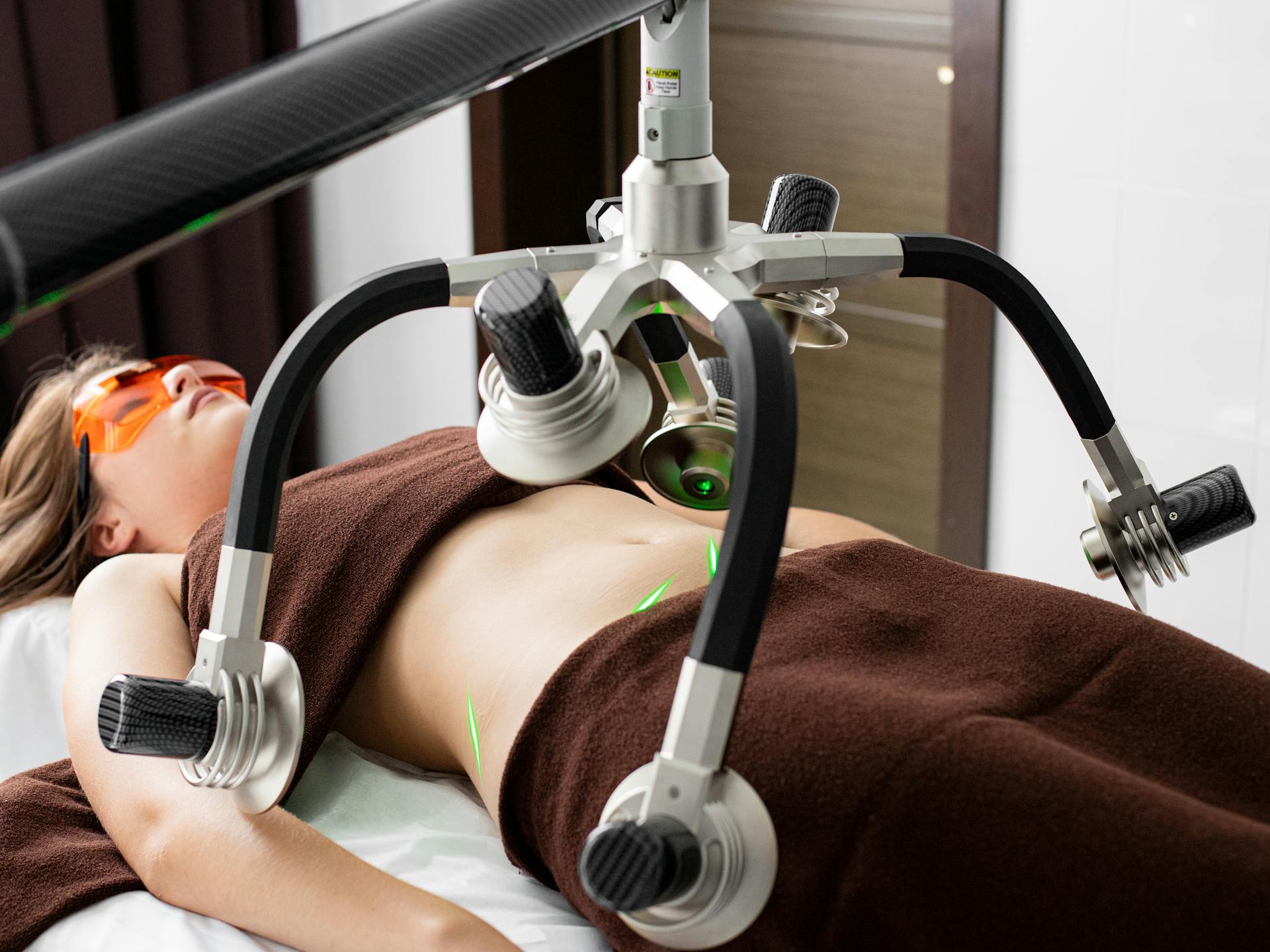
Electrolysis for hair removal is a long-term solution, but it can be expensive. Most people pay out-of-pocket for electrolysis, with prices ranging from $30 to $100 per session, depending on the area being treated.
Insurance policies vary in their coverage for electrolysis, but some may cover it as a medically necessary treatment. For example, if you have excessive hair growth due to a hormonal imbalance or a medical condition, your insurance might cover some or all of the costs.
In some cases, insurance may cover electrolysis as a cosmetic procedure, but this is rare and often requires a doctor's note.
Does Insurance Cover Electrolysis?
Insurance companies are more likely to cover preoperative hair removal for transgender patients. This is in preparation for genital surgery, and it's a requirement for many procedures.
Most insurance policies exclude hair removal coverage entirely or only cover it for preoperative preparation. This means that if you're not having surgery, you might not be eligible for coverage.
Recommended read: Insurance Cover Lice Removal
The Affordable Care Act (ACA) marketplace policies are more likely to cover preoperative and nonsurgical hair removal. This is good news for those who need hair removal for medical reasons, but not for cosmetic purposes.
No insurance plan makes a distinction between electrolysis and laser hair removal (LHR) in terms of coverage differences. This means that both methods are treated equally in terms of insurance coverage.
Some insurance policies contain language restricting hair removal coverage or don't mention it at all. However, they might also include clauses that permit coverage of cosmetic procedures deemed "medically necessary." This could be used to cover hair removal, especially for preoperative electrolysis.
Letters of medical necessity may be enough to grant coverage for preoperative or nonsurgical hair removal in some cases. This is a good option to explore if you need hair removal for medical reasons.
For your interest: Does Insurance Cover Medical Mar
Electrolysis vs. Other Hair Removal Methods
Electrolysis is a long-term hair removal solution that can be more cost-effective than other methods in the long run. It's a permanent solution, which means you won't have to worry about hair regrowth.
Compared to waxing or sugaring, electrolysis can be less painful and less prone to ingrown hairs. Electrolysis is also a more precise method, allowing for more accurate hair removal.
Other methods like laser hair removal or IPL can be more expensive upfront, but they may not be as effective for everyone. Electrolysis, on the other hand, is a more targeted approach that can be tailored to your individual hair removal needs.
Electrolysis vs. Laser Hair Removal
Electrolysis vs. Laser Hair Removal is a common debate among those seeking permanent hair removal. Electrolysis is a time-consuming process that involves inserting a fine needle into each hair follicle to destroy the root, taking around 15-30 minutes per session.
Laser hair removal, on the other hand, uses high-intensity light to target and destroy hair follicles, often requiring multiple sessions for optimal results. It's essential to choose the best hair removal method tailored to your skin type, as mentioned in the article.
Electrolysis is a good option for people with sensitive skin or those who have a limited number of hairs to remove, as it's a more targeted approach. It's also effective for removing fine hairs, such as those on the eyebrows or upper lip.
Laser hair removal is often more suitable for those with darker hair and lighter skin, as it's more effective at targeting the pigment in the hair. However, it can be less effective for people with lighter hair or darker skin.
On a similar theme: Does Health Insurance Cover Plan B
Methods
Electrolysis is a long-term hair removal method that involves inserting a fine needle into each hair follicle and applying a small electric current to destroy the hair root.
Waxing and sugaring, on the other hand, are temporary hair removal methods that use hot wax or sugar paste to remove hair from the root.
Electrolysis is a more precise method, allowing for individual hair removal, whereas waxing and sugaring remove hair in larger groups.
Depilatory creams dissolve hair at the surface of the skin, making them a quick and relatively painless option.
However, depilatory creams can cause skin irritation and may not be suitable for sensitive skin.
Preparation and Process
Before you start the electrolysis process, it's essential to prepare your skin. This involves shaving the area to be treated, as electrolysis works best on hair follicles that are as close to the skin as possible.
Some insurance plans may cover electrolysis, but it depends on the specific policy and the reason for treatment. For example, if you're undergoing electrolysis for a medical condition like hypertrichosis, you may be more likely to have coverage.
In most cases, you'll need to schedule a consultation with a licensed electrologist to determine the best course of treatment and estimate the cost.
Provider's Letter for Hair Removal
To get insurance-covered hair removal, you'll need a provider's letter outlining the medical necessity for the treatment. This letter should specify the size and location of the treatment area and the anticipated number of units required per body region for the requested treatment.
A referral from your doctor to the electrolysis clinic can also be beneficial in outlining this information, but a drafted letter is recommended. This letter should be completed within the last 18 months by the provider who will perform the hair removal.
For more insights, see: Health Insurance Cover Letter
If you're seeking electrolysis due to Polycystic Ovary Syndrome (PCOS) or another follicular disorder, your provider should address the specific condition prompting the need for electrolysis in the letter. The letter should detail previous hair removal attempts and specify any failures by body region.
The provider's letter should also explain the medical condition that hinders the use of alternative hair removal methods, such as laser or shaving. In the case of PCOS or other follicular disorders, the letter should describe how these conditions contribute to excessive hair growth (hirsutism) or other hair removal difficulties.
Here's a summary of the required information for the provider's letter:
- Size and location of the treatment area
- Anticipated number of units required per body region
- Previous hair removal attempts and failures by body region
- Medical condition hindering alternative hair removal methods
- How PCOS or other follicular disorders contribute to excessive hair growth or hair removal difficulties
Treatment Areas:
To ensure you're prepared for your electrolysis treatment, it's essential to understand the various treatment areas involved.
The treatment areas include the face, neck, chest, abdomen, axillary (underarm), arm, upper back, lower back, buttocks, inner thigh, genital area, upper leg, and lower leg.
You can streamline the process by adhering to these requirements, which will improve your chances of obtaining insurance coverage for your treatments.

Gathering the necessary documentation is a crucial step in the process, so be sure to collect all the required documents before proceeding.
Booking a consultation is mandatory for all new clients, and you can do so online or by calling the office at 714-617-5463.
You can also email your documents to [email protected] or fax them to 714-880-7185 for convenience.
Frequently Asked Questions
Can electrolysis be medically necessary?
Yes, electrolysis can be considered medically necessary for individuals undergoing gender-affirming care, particularly when it's a prerequisite for surgery.
Featured Images: pexels.com


